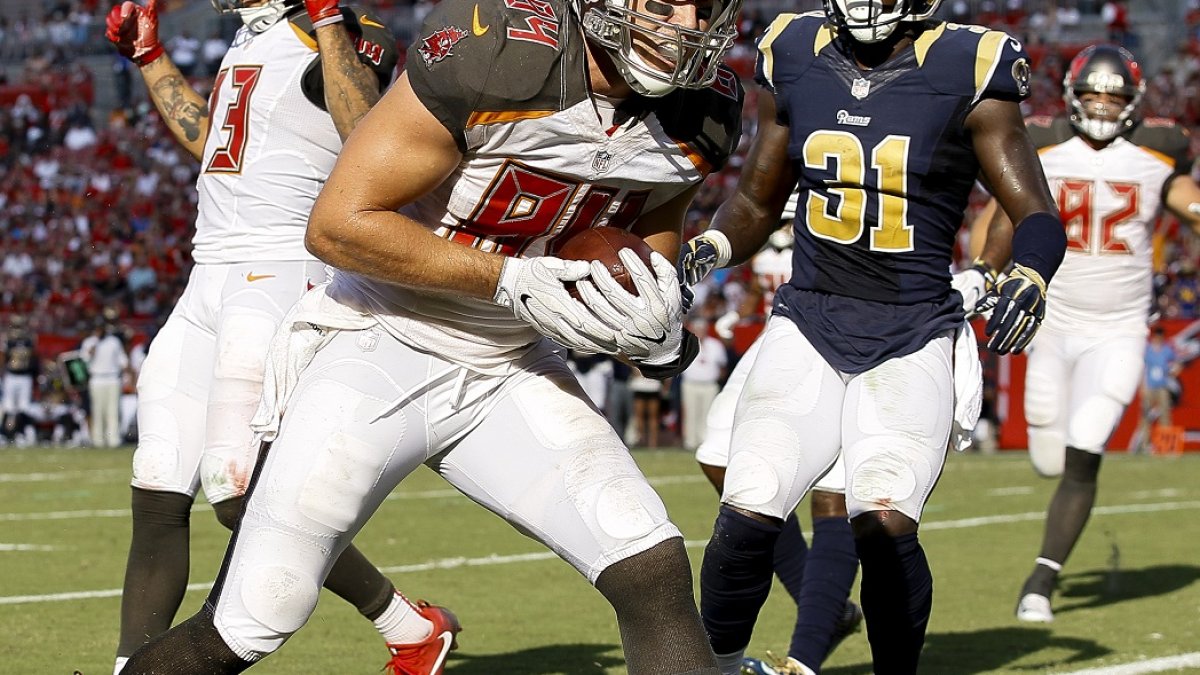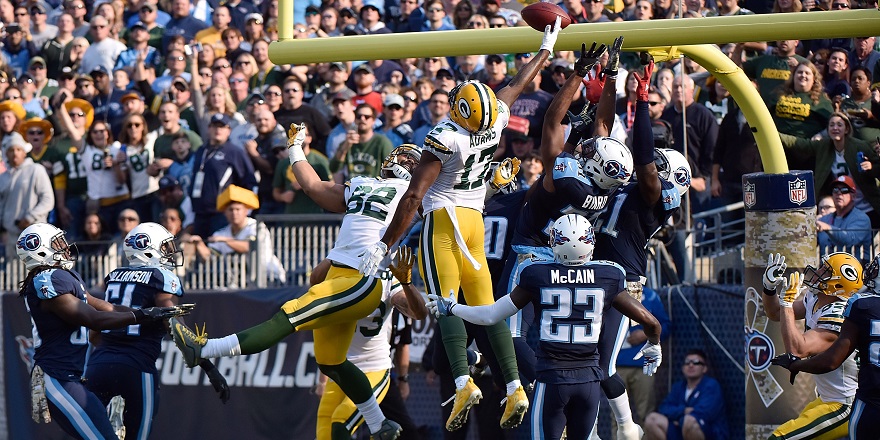(“Today's Crazy Fantasy Stat” is an occasional offseason offering from PFF that highlights something that catches our eye and aids in our preparation for the 2017 fantasy season.)
Big, gaudy touchdown numbers are awfully nice. To get 60 receiving yards generally takes time, multiple targets. At the very least, it takes a heck of a nice break on one play. But a touchdown? Heck, that’s the same number of points with (theoretically) way less work.
The only problem is, receiving touchdowns almost always take a lot of targets. At least in bulk — three players caught a touchdown on their only target of 2016, while no player with 50-plus targets even cracked a touchdown on 13 percent of those targets — you need targets to reach touchdowns. Exceptions to this rule do exist, but they’re rare and sporadic.
As proof, from 2006 to 2015, 47 different players had 50-plus targets with a touchdown on at least 10 percent of those targets (2014 Julius Thomas, with 12 touchdowns on 60 targets, was the only one of that list to crack the 20-percent threshold). In the aggregate, those 47 players scored 545 touchdowns on 4,364 targets, reaching pay-dirt 12.49 percent of the time. The next year, those same players combined for 238 touchdowns on 4,002 targets, dropping the percentage to 5.95. In other words, the guys at the upper bound of touchdown scoring saw their success rate drop to roughly half.
(Subscribe to all our fantasy content, or get everything PFF offers with an All-Access subscription.)
In the last decade, there has been only one player to top 50 targets and a 10-percent scoring rate in back-to-back years: Rob Gronkowski in 2011 and 2012. He actually improved his rate, going from 17 touchdowns on 121 targets (14.05 percent) to 11 touchdowns on 77 targets (14.29 percent). Removed the target threshold from the second year (in other words, allow for a small sample in the second year, and only Gronkowski, 2009-10 Fred Davis, and 2015-16 Tyler Eifert make the list. In other words, if you’re going to score through the air at an extreme rate consistently, you’re likely going to be a tight end — a small bit of information that is partly negated by the fact that Marcedes Lewis followed up his 11.63-percent scoring 2010 with zero touchdowns on 76 targets in 2011.
What does this all mean? Well, four players made the list of 50 targets and 10 percent touchdowns in 2016 — Kenny Stills (12 percent), Martellus Bennett (10.61), Cameron Brate (10.26) and Davante Adams (10.17). All four were fantasy producers to varying degrees last year, and odds are good that all four will be at the least less efficient in 2017.
Adams was the leading fantasy scorer of the group in 2016, finishing as fantasy’s No. 7 receiver with 171 standard fantasy points. Cut his touchdown output roughly in half, and he’d have had six scores, roughly 135 points, and would barely a top-20 receiver.
It’s tempting to see gaudy touchdown numbers and envision sustained success. Brate is already getting mentioned as a potential sneaky TE play in 2017 drafts. But his touchdown production in 2016 happened at a rate that has shown to be unsustainable in recent years. Don’t draft him for 2017 expecting the 2016 player to be there.




 © 2024 PFF - all rights reserved.
© 2024 PFF - all rights reserved.